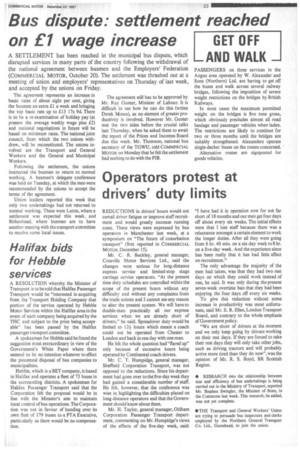The agreement represents an increase in basic rates of about
Page 25

If you've noticed an error in this article please click here to report it so we can fix it.
eight per cent, giving the busmen an extra £1 a week and bringing the top basic rate up to £13 17s 9d. There is to be a re-examination of holiday pay (at present the average weekly wage plus £2) and national negotiations in future will be based on minimum rates. The national joint council, from which the two unions withdrew, will be reconstituted. The unions involved are the Transport and General Workers and the General and Municipal Workers.
Following the settlement, the unions instructed the busmen to return to normal working. A busmen's delegate conference was held on Tuesday, at which the men were recommended by the unions to accept the terms of the agreement.
Union leaders reported this week that only two undertakings had not returned to normal working. These were Luton, where a settlement was expected this week, and Birkenhead, where busmen are to have another meeting with the transport committee to resolve some local issues.
The agreement still has to be approved by Mr. Ray Gunter, Minister of Labour. It is difficult to see how he can do this (writes Derek Moses), as no element of greater productivity is involved. However Mr. Gunter met the two sides before the crucial talks last Thursday, when he asked them to await the report of the Prices and Incomes Board due this week. Mr. Thomson, national bus secretary of the TGWTJ, told COMMERCIAL MOTOR on Monday that he felt the settlement had nothing to do with the NB.




















































































